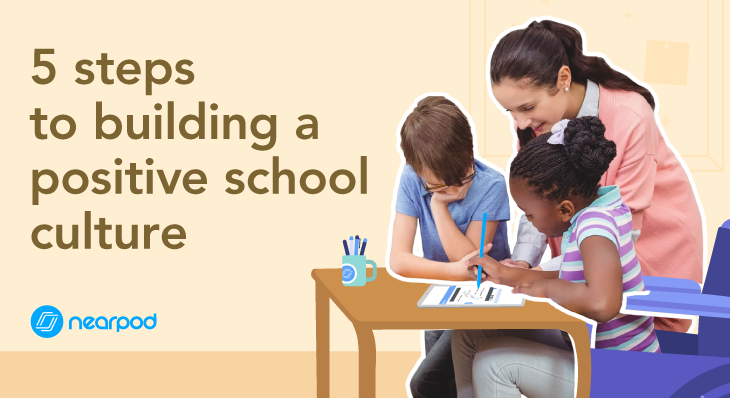
5 steps to building a positive school culture
Imagine walking into a school where you’re greeted with the smiling faces of students and teachers. Teachers are excited to begin their day and students look forward to learning and developing themselves. Every lecture is engaging and brings a little more joy to everyone participating. Such is a positive school culture.
What is a positive school culture?
Positive school culture is inclusive, student-focused, and open to learning. Both students and teachers like to go beyond themselves enabling high student engagement.
Transformations endure, staff morale strengthens, and student learning rises in a positive school culture. ☀️ Begin building it in your school with these 5 easy steps!Click To TweetIdentifying your school culture
While positive school culture builds growth, toxic school culture can be draining and devoid of motivation. A toxic school culture lacks honest dialogue, accountability, and collaboration, and views students as the problem rather than the purpose.
How do you build a positive school culture?
With an investment of time and intentional effort, any culture can be nurtured into a positive school culture. Here are 5 meaningful steps:
1. Build Relationships
I once had an exuberant and positive Area Superintendent whose best advice towards improvement was: “Relationships, relationships, relationships.” With a whole lot more experience now, it’s clear that relationships are indeed the foundation of a school culture that breeds caring. When staff and students feel gratified and valued, they are likely to work harder and enjoy their work.
2. Model positive behavior
Positivity is contagious! Every action creates a ripple effect replicating the nature of the action for all the people observing it– colleagues, leaders, or students. With that level of influence, it is a responsibility to model positive and motivating behavior and thoughts. Disengage with negative mindsets and seek to find the good in people and situations. You’ll notice an almost immediate improvement in your environment!
3. Set goals that elevate school expectations
Collectively, if everyone believes they can achieve more, they will do just that. Setting meaningful goals that elevate expectations for everyone–staff, students, and parents–is a great way to do that. It aligns everyone’s mindsets, increases accountability, and has them working as a team towards the same goals.
4. Share your school’s vision
Bring everyone together to create a vision. Involve everyone in the decision-making process of the vision, to carry the vision through. Therefore, it’s important to invest in both the shared vision and an individual’s personal vision. This way you ensure you make your staff and students feel like they are treated in the same manner as everyone else.
5. Appreciate people
Because recognition is powerful, it can dramatically impact both teacher and student behavior. Small tokens of appreciation go a long way. Hand-written notes, certificates, a bulletin board, a phone call at home, or a school or class newsletter are all avenues that can recognize students and/or staff and make them feel appreciated.
Positive school culture in action
A positive school culture impacts the entire learning experience for everyone involved, especially new teachers and students. But one doesn’t build this culture overnight. With the right intentions and actions every day, however, you get a whole lot closer to it than you were before.
So next time you find yourself thinking about how you can increase your happiness at your school, you’ll know what to do.
Interested in finding more resources? Nearpod’s Learning Labs provides teachers with expert-derived, tech-enhanced, teacher professional development. Our collection combines workshops on academic strategies, classroom management, lesson planning, restorative practices, using tech, and more.
Nearpod’s 21st Century Readiness Program for students includes a social-emotional learning curriculum that provides instruction, reflection, and practice opportunities around CASEL aligned social and emotional learning competencies: self-awareness, self-management, responsible decision-making, relationship skills, and social awareness.

Katie is a Personalized Learning Leader in Volusia County Schools. She helps teachers incorporate educational technology into their curriculum. She believes that students deserve an instructional practice that resonates with their daily lives, and that includes the utilization of technology. She is on a mission to promote the endless benefits that edtech can have on 21st century instructional practices.









